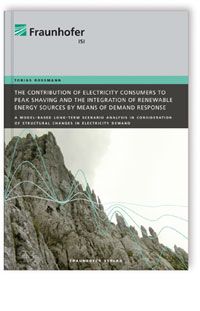FORECAST/eLOAD
-
07.08.2020 Industrial excess heat for district heating: Database shows great potential for supplying households
Excess heat from energy-intensive industries is often suitable for use in district heating systems but is usually unutilized. A detailed overview of the potentials available in the EU is now provided by a database of the sEEnergies project. In Germany, 29 petajoules of excess heat from industrial sites could be used, which corresponds to the demand of more than half a million households. The information is available as maps and downloadable datasets.
Holistic analysis of the future demand response potential
12.10.2016
A Phd thesis finds positive effect of demand response for the integration of renewable energies in the German electricity system.

Demand Response (DR) is an option to integrate the increasing share of electricity generation from renewable sources into the energy system by actively adjusting the demand behaviour of electricity consumers. Using the eLOAD model, this thesis provides a holistic analysis of the future demand response potential, considering the individual demand response end-uses and their respective techno-economic constraints in combination with a focus on the national system load and potential demand response programmes.
Among others, the thesis finds that demand response can create substantial added value in terms of net load smoothing and integration of renewable energies. Thereby it can reduce the required additional power plant capacity and increases annual running hours of existing power plants. However, the thesis also shows that demand response is not sufficient as the only option to integrate renewable energies into the electricity system.
The more than 200 pages provide many more insights into the role of demand response as well as future long-term changes of the system load curve.
Full reference:
Boßmann, Tobias (2015): The contribution of electricity consumers to peak shaving and the integration of renewable energy sources by means of demand response. A model-based long-term scenario analysis in consideration of structural changes in electricity demand. Stuttgart: Fraunhofer Verlag
The thesis can be downloaded at
https://www.verlag.fraunhofer.de/bookshop/artikel.jsp?v=244167.
© 2024 Fraunhofer ISI | Publishing Notes | Data Protection


